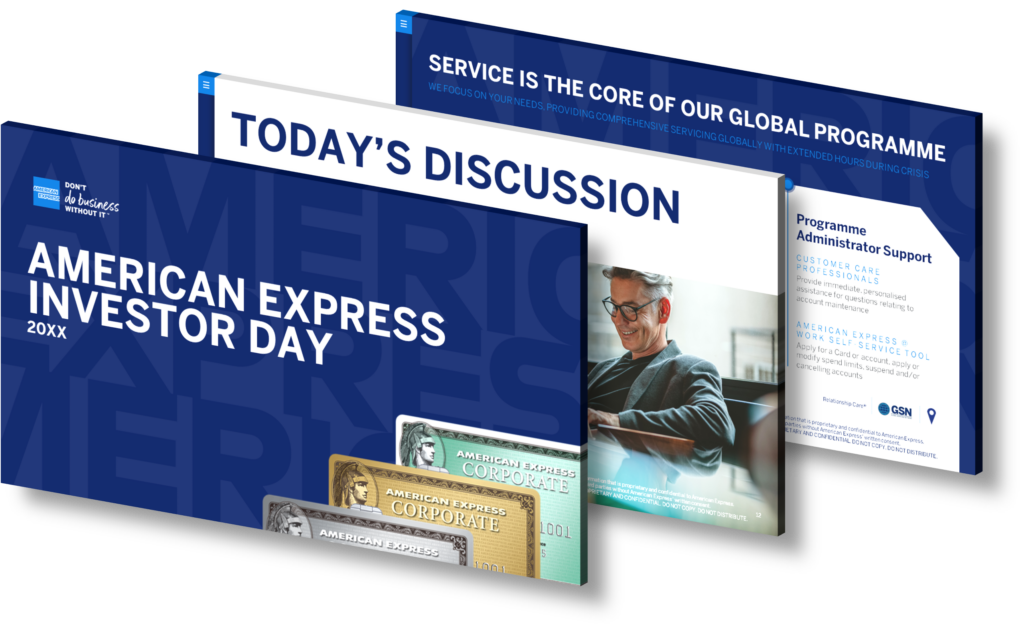How can legal marketing teams boost board meeting presentations with industry-specific, customizable templates?
Legal marketing teams can significantly enhance their board meeting presentations with the help of industry-specific, customizable templates. Here’s how:
1. Time Efficiency
Customizable templates save time as they provide a pre-structured format, eliminating the need to build a presentation from scratch. This allows legal marketing teams to focus more on the content and less on the design aspects.
2. Consistency
Using a consistent template for all your board meeting presentations helps establish your brand identity. It ensures that every presentation aligns with your firm’s branding, maintaining a professional image.
3. Enhanced Visual Appeal
Industry-specific templates are designed with the legal sector in mind. They use relevant visuals, infographics, and design elements that make the presentation more engaging and visually appealing to board members.
4. Improved Communication
Customizable templates often come with built-in layouts and structures that help in presenting complex legal information in a clear, concise, and easy-to-understand manner. This aids in better communication and understanding of the presented data.
5. Scalability
Customizable templates are scalable, which means they can be easily tweaked according to the size and nature of the meeting. Whether it’s a small internal meeting or a large board meeting, the template can be adjusted accordingly.
At SlideGenius, we provide industry-specific, customizable presentation templates that are designed to make your board meeting presentations more effective and visually appealing. Our team of expert designers understands the unique needs of the legal sector and can create templates that meet your exact requirements.
View Our Presentation Portfolio

How can SaaS leaders boost stakeholder engagement in virtual earnings calls using interactive data visualizations?
SaaS leaders can significantly boost stakeholder engagement in virtual earnings calls by leveraging interactive data visualizations in several ways. It’s essential to remember that visualization is a powerful tool that simplifies complex data sets and makes the interpretation of data easier, faster, and more effective.
Highlight Key Metrics
Firstly, key metrics can be highlighted using interactive charts and graphs. These could include revenue growth, customer acquisition costs, churn rates, or average revenue per user. By visualizing these metrics, stakeholders can more easily understand the company’s performance and make informed decisions.
Create Interactive Dashboards
Creating interactive dashboards that allow stakeholders to manipulate the data themselves can further drive engagement. This interactivity gives them a chance to explore different scenarios or delve deeper into specific areas of interest, which can lead to richer discussions during the earnings call.
Use Storytelling Techniques
Using storytelling techniques can also help to communicate the company’s progress and future plans. For example, an interactive timeline could show how the company’s revenues have grown over time, while a map could illustrate geographic expansion.
Implement Real-Time Updates
Implementing real-time updates to the visualization as data comes in can also create a more engaging experience. Stakeholders will appreciate the transparency and feel more involved in the process.
Ensure Accessibility
Lastly, it’s crucial to ensure that these visualizations are accessible on various devices. This means they should be designed to work equally well on desktop computers, laptops, tablets, and smartphones. This will allow stakeholders to engage with the data wherever they are and however they prefer.
In conclusion, interactive visualizations can make virtual earnings calls more engaging and effective. They can help SaaS leaders communicate complex data in a simple and clear way, leading to better understanding and more productive discussions.
View Our Presentation Portfolio

What are some tips for creating a compelling pitch deck for a TV show?
Creating a compelling pitch deck for a TV show involves several key strategies to ensure your concept stands out to networks, producers, and investors. Here are some tips to help you craft an effective pitch deck:
1. Start with a Strong Cover Page
- Engaging Visual: Use a high-quality, eye-catching image that represents the essence of your show.
- Clear Title and Tagline: Make sure your show’s title and tagline are prominent and memorable.
2. Craft a Compelling Logline
- Concise Summary: Summarize the core premise of your show in one or two sentences.
- Hook: Ensure it captures the unique hook of your show, something that makes it stand out.
3. Develop a Detailed Synopsis
- Overview: Provide a brief summary of the entire series, focusing on the main plot and key conflicts.
- Engage with Storytelling: Write this section in a way that engages the reader, almost like a mini-story.
4. Define Your Characters
- Character Bios: Include detailed descriptions of the main characters, highlighting their backgrounds, motivations, and arcs.
- Visuals: If possible, add visuals or character sketches to make them more relatable.
5. Outline the Pilot and Season One
- Pilot Episode: Give a brief but detailed summary of the pilot episode, emphasizing how it sets up the series.
- Season Arc: Provide an overview of the main plot points and character development throughout the first season.
6. Showcase the Tone and Style
- Visual and Tonal References: Use images, color schemes, and comparisons to existing shows to convey the visual style and tone.
- Mood Board: Create a mood board that visually represents the feel of the show.
7. Identify Your Target Audience
- Demographics: Clearly define who your target audience is.
- Market Research: Provide any relevant data or trends that show the demand for content like yours.
8. Highlight the Market Potential
- Comparative Shows: Mention successful shows that are similar in theme or style to show market potential.
- Unique Selling Proposition: Clearly state what makes your show unique and why it will attract viewers.
9. Introduce the Creative Team
- Bios: Include short biographies of the key creative team members.
- Experience and Credentials: Highlight any relevant experience or notable past projects.
10. Present a Marketing and Distribution Plan
- Promotion Strategies: Outline how you plan to market the show.
- Distribution Channels: Discuss potential networks, streaming platforms, or other distribution methods.
11. Include Budget and Funding Details
- High-Level Budget: Provide an overview of the estimated production costs.
- Funding Needs: Clearly state what funding is required and how it will be used.
12. End with a Strong Call to Action
- Next Steps: Clearly outline what you are asking for (e.g., funding, distribution deal) and the next steps for interested parties.
Additional Tips
- Keep It Visual: Use high-quality images, graphics, and a consistent color scheme to make your deck visually appealing.
- Be Concise: Avoid overly lengthy text; keep information concise and to the point.
- Tell a Story: Make sure your pitch deck flows like a story, keeping the reader engaged from start to finish.
Resources for Professional Assistance
- SlideGenius: Specializes in creating high-quality pitch decks tailored to your needs.
- PitchDeck.com: Provides specialized services for creating compelling pitch decks for TV shows and other projects.
- SlideStore.com: Offers ready-made templates that can be customized for TV show pitches.
- SlideStore.com
By incorporating these tips and using professional resources, you can create a compelling pitch deck that effectively communicates your TV show concept and captures the interest of potential investors and partners.
View Our Pitch Deck Portfolio
